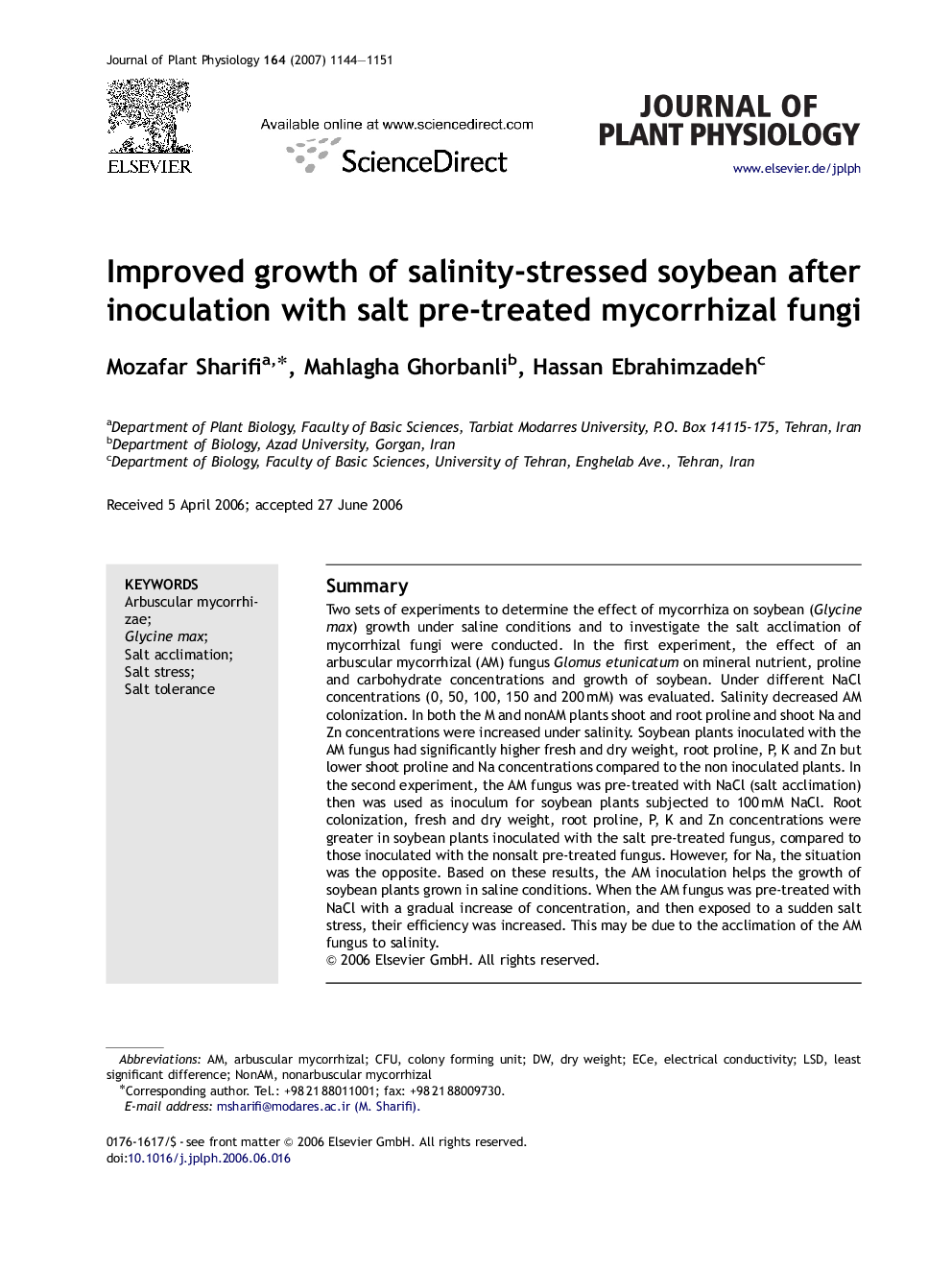| Article ID | Journal | Published Year | Pages | File Type |
|---|---|---|---|---|
| 2057226 | Journal of Plant Physiology | 2007 | 8 Pages |
SummaryTwo sets of experiments to determine the effect of mycorrhiza on soybean (Glycine max) growth under saline conditions and to investigate the salt acclimation of mycorrhizal fungi were conducted. In the first experiment, the effect of an arbuscular mycorrhizal (AM) fungus Glomus etunicatum on mineral nutrient, proline and carbohydrate concentrations and growth of soybean. Under different NaCl concentrations (0, 50, 100, 150 and 200 mM) was evaluated. Salinity decreased AM colonization. In both the M and nonAM plants shoot and root proline and shoot Na and Zn concentrations were increased under salinity. Soybean plants inoculated with the AM fungus had significantly higher fresh and dry weight, root proline, P, K and Zn but lower shoot proline and Na concentrations compared to the non inoculated plants. In the second experiment, the AM fungus was pre-treated with NaCl (salt acclimation) then was used as inoculum for soybean plants subjected to 100 mM NaCl. Root colonization, fresh and dry weight, root proline, P, K and Zn concentrations were greater in soybean plants inoculated with the salt pre-treated fungus, compared to those inoculated with the nonsalt pre-treated fungus. However, for Na, the situation was the opposite. Based on these results, the AM inoculation helps the growth of soybean plants grown in saline conditions. When the AM fungus was pre-treated with NaCl with a gradual increase of concentration, and then exposed to a sudden salt stress, their efficiency was increased. This may be due to the acclimation of the AM fungus to salinity.
